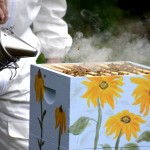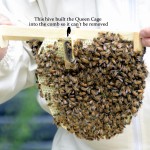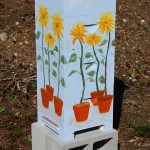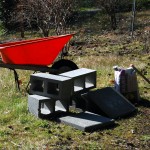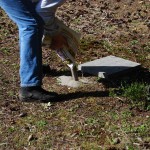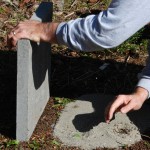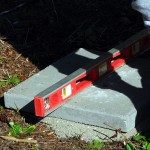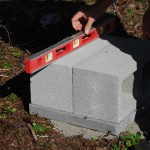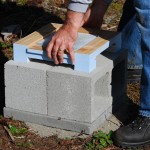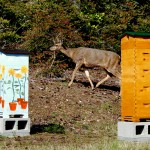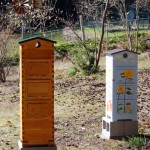After one week I opened up the hives to see how the bees were doing. The hive with flowers, the one with Italians were building comb but not at the same rate as the other hive with the Carniolan queen.
I’d guesstimate that the Italian hive had some comb on maybe 4 of the bars with the Carniolan colony having comb on probably 6 of the bars. Easily twice as much comb produced in the Carni hive. You can see that the carniolan hive built the queen cage right into the comb. I was afraid of removing it for fear of weakening the structure. Once this bar is fully drawn out I’ll see if I can carefully extricate the queen cage.
I don’t know if this is just the difference between two hives or a specific difference between an Italian queen and a Carniolan queen. This is something I’ll have to watch in the future.
I’m finding that they are going through almost a full bottle of sugar water in 24 hours, which is about half of a kilo of sugar. I’m mixing my sugar on a one to one ration. 1 liter of warm water with 1 kilo of white sugar.
It also appears that in both cases only about 15% of the bees are in and out of the hive, the balance are all focused on comb building. I’m wondering if this will shift as the comb gets built out and perhaps I’ll see more bees foraging.

